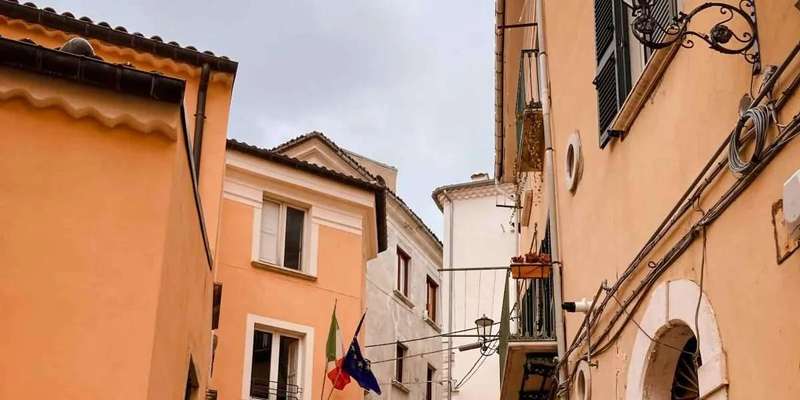- Home
- Useful Tips
- Wheelchair accessible routes in...
Navigating historic Italian towns in a wheelchair often feels impossible, with cobblestone streets and ancient staircases blocking access at every turn. Campobasso's medieval old town presents particular challenges, where 83% of visitors with mobility issues report abandoning exploration attempts within an hour due to inaccessible routes. The frustration of missing out on hidden piazzas, artisan workshops, and panoramic viewpoints shouldn't deter you from experiencing authentic Molise culture. Local insights reveal carefully preserved pathways that maintain the town's charm while accommodating wheelchairs, transforming what seems like an obstacle course into an enjoyable cultural journey.


Mapping the accessible entrance points to Campobasso's historic center
Most visitors approach Campobasso's old town from Via Mazzini, unaware that its steep incline and uneven surfaces create immediate barriers. The secret lies in accessing through Via Sant'Antonio Abate near the Cathedral, where a carefully maintained ramp system (gradient under 6%) leads directly to the heart of the historic district. Local authorities recently repaved this 14th-century access route with smooth basalt slabs, preserving the medieval aesthetic while ensuring wheelchair stability. This northern approach brings you past the 16th-century Santa Maria della Croce church, where artisans still craft traditional copperware in accessible workshops. Morning visits before 10am offer the clearest paths, as delivery vehicles haven't yet crowded the limited accessible parking near Porta San Paolo.
Navigating the level route to Campobasso's castle viewpoint
The panoramic view from Monforte Castle seems reserved for able-bodied visitors climbing its steep approach – until you discover the wheelchair-accessible back route. Starting at Piazza Pepe, follow Via Chiarizia past the historic Palazzo San Giorgio, where the 300-meter gradual incline (max 5% gradient) leads to an alternative viewing platform. Though the castle interior remains partially inaccessible, this path reveals breathtaking vistas across the Matese mountains without encountering steps. Local guides recommend late afternoons when the setting sun illuminates the valley, and the stone pathway retains residual warmth for comfortable seating. Along this route, the 13th-century San Leonardo church offers an accessible side entrance to view its famous rose window.
Accessible dining and rest stops in the old town
Finding wheelchair-friendly eateries in medieval towns often means compromising on authenticity, but Campobasso preserves accessibility without sacrificing tradition. Family-run Osteria da Peppino modified its 18th-century cellar dining area with removable wooden ramps, maintaining original stone arches while accommodating wheelchairs. Their ground-floor restroom meets EU accessibility standards – a rarity in historic centers. For quick breaks, Caffè Duomo near the cathedral provides spacious seating with adapted tables on a level piazza. Local tip: Thursday mornings see the weekly market in Piazza Vittorio Emanuele, where vendors arrange stalls with widened aisles specifically for wheelchair users to browse Molise cheeses and crafts.
Hidden accessible gems most tourists miss
Beyond the main attractions, Campobasso's old town hides wheelchair-accessible surprises known only to locals. The Museo dei Misteri, documenting the town's famous floating procession, installed a glass elevator blending seamlessly with its 15th-century palazzo exterior. Few notice the smooth brick pathway leading to artisan Umberto's woodworking bottega near Arco Meridionale, where he demonstrates traditional chair-caning at wheelchair-height workbenches. The most rewarding secret? A fully accessible medieval garden behind Santa Maria delle Grazie, where aromatic herbs grow in raised beds designed by monastery herbalists. These discoveries transform accessibility from limitation to privileged access, offering intimate encounters with Campobasso's living history.
